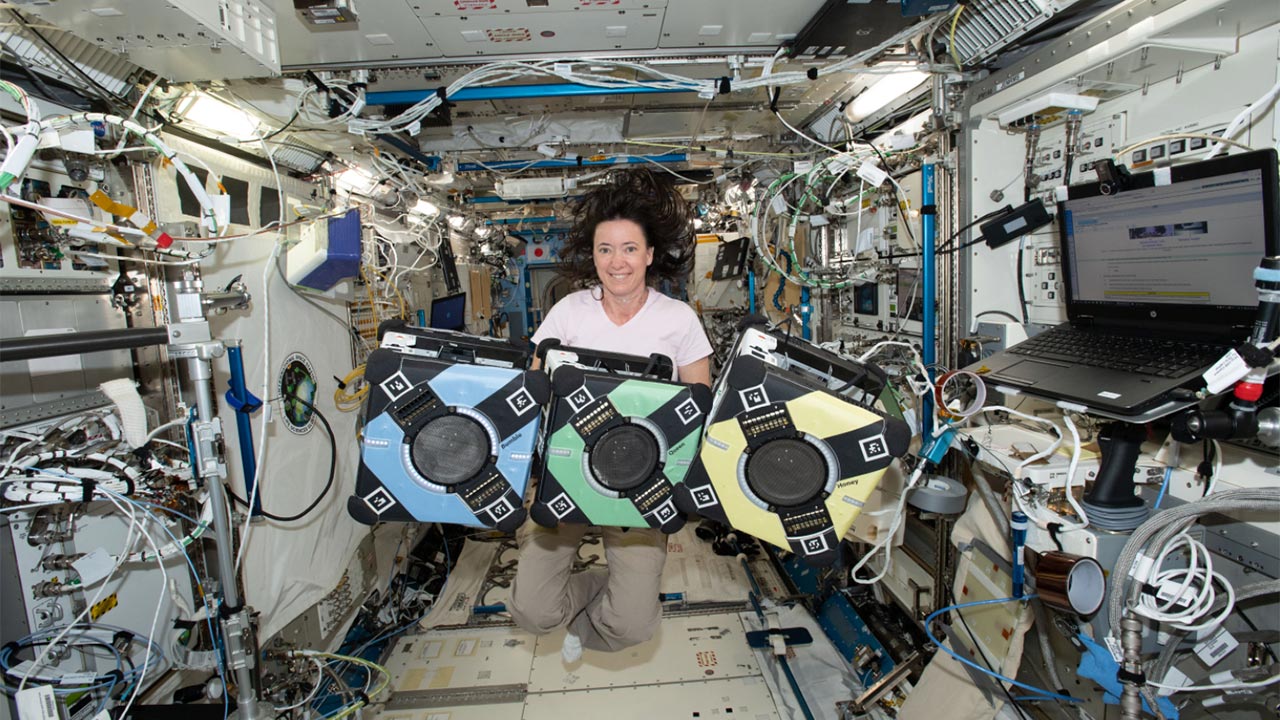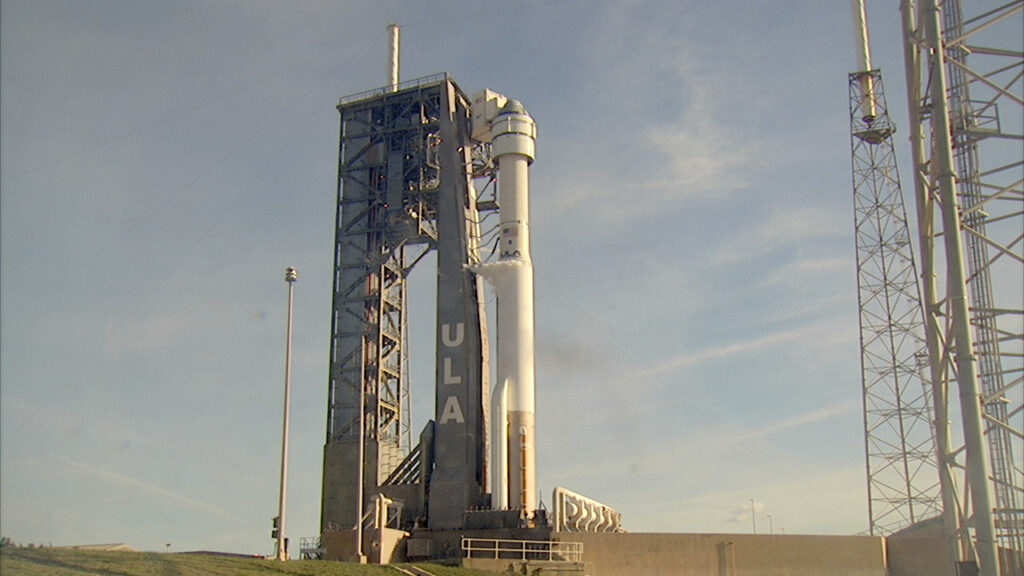
Another round of safety training is underway today on the International Space Station. The Expedition 69 crew members were also tasked with robotic activities, ultrasound scans and station maintenance.
United Arab Emirates (UAE) Flight Engineer Sultan Alneyadi powered on the station’s free-flying robots, Astrobee, in the morning. Later in the day, NASA astronaut Woody Hoburg performed a Zero Robotics dry run with Astrobee in the Japanese Experiment Module and assisted grounds teams with multiple software test runs. In dry run sessions, the Astrobee robots verify various aspects and programming for the Zero Robotics student competition—a program that provides students the opportunity to write software that controls one of three Astrobee robots, helping inspire the next generation of explorers, scientists and engineers.
Alneyadi was also tasked with consolidating food as the crew preps for the berthing of Northrop Grumman’s 19th commercial resupply mission, targeted for launch on Tuesday, August 1 and capture on Friday, August 4.
NASA astronaut Stephen Bowen was joined by Hoburg in the afternoon to take ISAFE measurements. In the microgravity environment, blood and fluids shift toward the head, which can cause structural changes to the eye. ISAFE measures eye, brain and blood vessel changes in microgravity using an ultrasound device in order to help researchers better predict eye changes on future long-duration spaceflight.
NASA Flight Engineer Frank Rubio performed computer maintenance in the Japanese Experiment Module in the morning. He then completed maintenance tasks on the Confocal Space Microscope, a Japanese Aerospace Exploration Agency facility that provides fluorescent images of biological samples. At the end of the day, Rubio, joined by Alneyadi, Hoburg, Bowen and Commander Sergey Prokopyev and Flight Engineers Dmitri Petelin and Andrey Fedyaev of Roscosmos, all completed a second set of safety drills.
Ahead of training, Prokopyev completed maintenance tasks in the Zvezda service module while Fedyaev took inventory in the Functional Cargo Block, or Zarya module, and Petelin ran additional experiments studying liquid phases in microgravity.
Mission Control Center Houston is back to normal operations after full communication with the International Space Station was restored July 25, following a loss of power to the space station’s primary ground communication equipment at NASA’s Johnson Space Center. The issue occurred during planned upgrades to the ground power system to ensure the mission control power grid remains robust and reliable. Ground teams activated the backup control center systems located at the agency’s Marshall Space Flight Center in Huntsville, Alabama, to regain communications with the space station while engineers addressed the power issue in Houston. The backup systems typically are used in events such as a hurricane when evacuation from Mission Control Center Houston may be necessary. Flight controllers in Houston were able to stay in contact with the Expedition 69 crew aboard the space station through Roscosmos, as well as backup channels and the crew was not in any danger. All check-outs of the equipment went as planned following repowering.
Learn more about station activities by following the space station blog, @space_station and @ISS_Research on Twitter, as well as the ISS Facebook and ISS Instagram accounts.
Get weekly video highlights at: https://roundupreads.jsc.nasa.gov/videoupdate/
Get the latest from NASA delivered every week. Subscribe here: www.nasa.gov/subscribe




